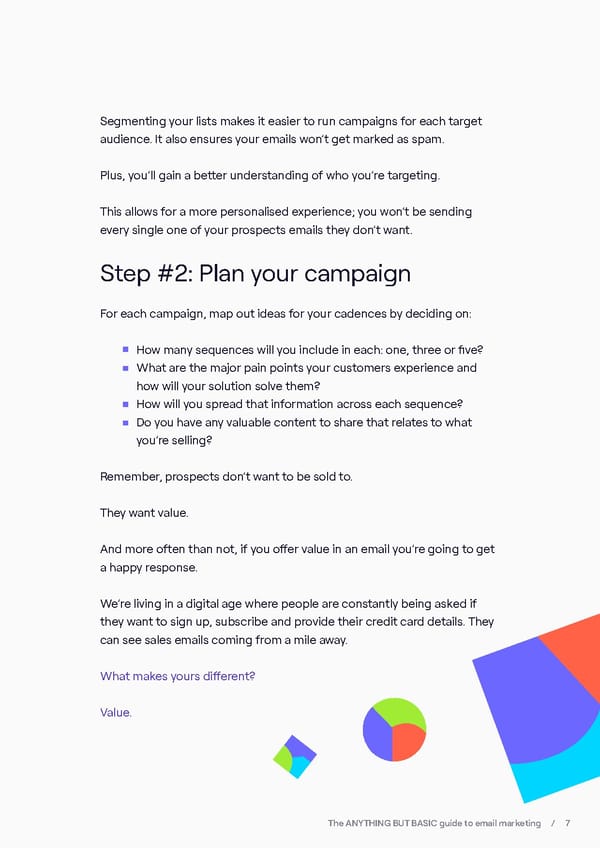Segmenting your lists makes it easier to run campaigns for each target audience. It also ensures your emails won’t get marked as spam. Plus, you’ll gain a better understanding of who you’re targeting. This allows for a more personalised experience; you won’t be sending every single one of your prospects emails they don’t want. Step #2: Plan your campaign For each campaign, map out ideas for your cadences by deciding on: How many sequences will you include in each: one, three or five? What are the major pain points your customers experience and how will your solution solve them? How will you spread that information across each sequence? Do you have any valuable content to share that relates to what you’re selling? Remember, prospects don’t want to be sold to. They want value. And more often than not, if you offer value in an email you’re going to get a happy response. We’re living in a digital age where people are constantly being asked if they want to sign up, subscribe and provide their credit card details. They can see sales emails coming from a mile away. What makes yours different? Value. The ANYTHING BUT BASIC guide to email marketing / 7
 The Anything but Basic | Cognism Page 6 Page 8
The Anything but Basic | Cognism Page 6 Page 8